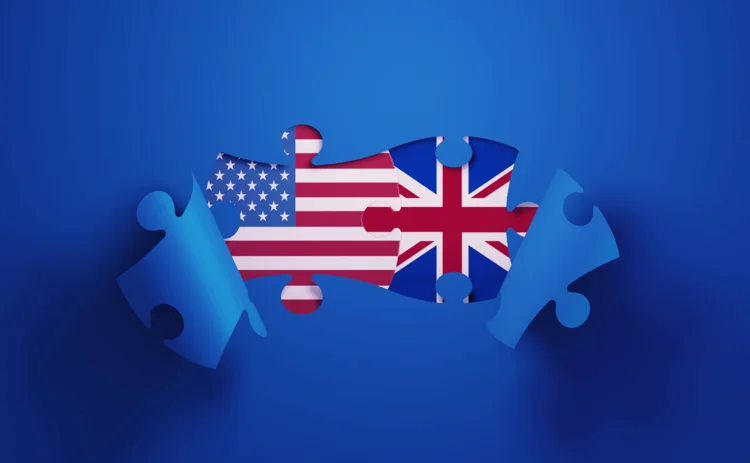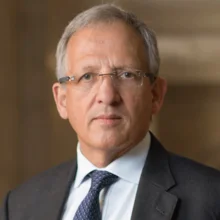
Strengthening supervisory co-operation in derivatives markets
Heath Tarbert and Jon Cunliffe set out a framework for regulating the global derivatives markets

The financial relationship between the United States and United Kingdom is a hugely important one. The UK is the single largest investor in the US – UK firms invested more than $560 billion in the region in 2018 – while the US is the largest investor in the UK, with firms investing more than $750 billion in the UK market in that same year.
This relationship extends across many parts of the financial system. Subsidiaries and branches of US banks had £4.9 trillion of assets in the UK at the end of the second quarter of 2020, while UK banks’ claims on US assets totalled around £876 billion. The US exports around $16 billion-worth of financial services to the UK each year, while the UK exports more than $28 billion-worth of financial services.
In particular, the relationship is important in derivatives markets, where the UK and US dominate global average daily turnover for over-the-counter interest rate derivatives. In April 2019, the UK had an average daily turnover of $3.7 trillion. The US figure was $2.4 trillion. Together, they account for more than 80% of the global market share.
These are truly global markets, and for good reason. The wide range of participants from all jurisdictions, the ability to net risk in multiple currencies and the sheer depth of liquidity enable participants to manage their risks in the most efficient and effective way.
Today, the Commodity Futures Trading Commission and the Bank of England – the main regulators of these markets – have signed a new agreement on supervisory co-operation in derivatives markets, which further reinforces their close relationship.
Derivatives can seem a remote issue for businesses and households, but they are essential in supporting the real economy. They allow manufacturers to manage credit risks in their supply chains, they help banks to offer mortgages, pension funds and insurance companies to manage interest rate and inflation risk, and they help energy suppliers to hedge movements in commodity prices.
Ten years ago, in the wake of the financial crisis, the US and UK were leading actors in the overhaul of the global regulatory framework. A crucial change was that key derivatives such as interest rate swaps should be run and risk-managed through central counterparties. By replacing the under-collateralised and opaque web of bilateral trades that had caused such damage in the crisis, we increased the protection against counterparty credit risk, enabled the efficient netting of positions and enhanced our visibility over the network of derivatives transactions.

The use of clearing – and particularly clearing across borders – has grown rapidly since then. US and UK central counterparties now clear hundreds of trillions of dollars in derivatives transactions every year. The ties between the US and UK have grown with it so much that it is not a stretch to say there exists a special regulatory relationship in financial services that is tangible in its own right.
The long-lasting significance of these reforms was seen when the Covid-19 pandemic sent shockwaves through the world’s financial markets earlier this year. The largest dollar moves in history were recorded for the S&P 500, Dow Industrial Average and Nasdaq-100. The FTSE All-Share index fell more than 10% on March 12.
Despite this market turmoil and a transition to a work-from-home model, the central counterparties at the heart of this activity remained resilient. As with all real market stress events, there will be lessons to learn about how to improve the system. As regulators for the largest derivatives markets in the world, we continue to look at how we can ensure central counterparties and their clearing members remain resilient now and in the future. But the events of the 2008 financial crisis did not repeat themselves, thanks, at least in part, to more efficient margining and central clearing, which prevented the emergence of widespread counterparty credit risk that had such a damaging impact 10 years ago.
As regulators for the largest derivatives markets in the world, we are committing to continuing to co-operate based on a shared understanding
Much like after that financial crisis, we have reached a critical moment. We can either continue to support a system of enhanced equivalence and mutual deference supporting global management of risk, which will in turn support greater trade, investment and innovation. Or we can turn inward and reduce co-operation among the authorities in the global financial system.
As regulators for the largest derivatives markets in the world, we are committing to continuing to co-operate based on a shared understanding. The agreement forged between the US and UK today therefore marks an important moment in the furthering of this co-operation.

The agreement entrenches a number of key principles: the central counterparty’s home country is the primary supervisor; the supervision of central counterparties that operate in both the US and UK is based on close co-operation and mutual respect; and in emergency situations, the home authority will take the lead in any response.
We both agree that cross-border infrastructure needs to be held to appropriately high standards. In order to thrive and to support safe and efficient global markets, the regulation and supervision of such infrastructures needs to maintain the highest levels of resilience, commensurate with the risks. And we also need to avoid conflicting or overlapping regimes, which is why this regulator relationship needs to be founded upon the right degree of deference to home supervisors.
Through the agreement, as leading global infrastructure regulators, we have embraced that philosophy and put in place the institutional structures for years of co-operative engagement. It champions the goal of mutual deference as set out in G20 commitments, and enshrines the understanding between us that the home country authority is accountable in its jurisdiction for the resilience of central counterparties under its supervision.
Decades ago, in the wake of the Latin American debt crisis of the 1980s, US and UK banking authorities understood the importance between the US and UK banking sectors, and reached an agreement “on primary capital and capital adequacy assessment”. That US/UK bilateral agreement led to the landmark Basel I accord, which lay the groundwork for international bank capital standards that continue to this day. Today’s agreement portends to have a similar legacy, further enabling our transatlantic derivatives markets to thrive in the decades to come.
Heath Tarbert is chairman and chief executive of the Commodity Futures Trading Commission. Jon Cunliffe is deputy governor for financial stability at the Bank of England
Only users who have a paid subscription or are part of a corporate subscription are able to print or copy content.
To access these options, along with all other subscription benefits, please contact info@risk.net or view our subscription options here: http://subscriptions.risk.net/subscribe
You are currently unable to print this content. Please contact info@risk.net to find out more.
You are currently unable to copy this content. Please contact info@risk.net to find out more.
Copyright Infopro Digital Limited. All rights reserved.
As outlined in our terms and conditions, https://www.infopro-digital.com/terms-and-conditions/subscriptions/ (point 2.4), printing is limited to a single copy.
If you would like to purchase additional rights please email info@risk.net
Copyright Infopro Digital Limited. All rights reserved.
You may share this content using our article tools. As outlined in our terms and conditions, https://www.infopro-digital.com/terms-and-conditions/subscriptions/ (clause 2.4), an Authorised User may only make one copy of the materials for their own personal use. You must also comply with the restrictions in clause 2.5.
If you would like to purchase additional rights please email info@risk.net
More on Comment
Op risk data: FIS pays the price for Worldpay synergy slip-up
Also: Liberty Mutual rings up record age bias case; Nationwide’s fraud failings. Data by ORX News
What the Tokyo data cornucopia reveals about market impact
New research confirms universality of one of the most non-intuitive concepts in quant finance
Allocating financing costs: centralised vs decentralised treasury
Centralisation can boost efficiency when coupled with an effective pricing and attribution framework
Collateral velocity is disappearing behind a digital curtain
Dealers may welcome digital-era rewiring to free up collateral movement, but tokenisation will obscure metrics
Does crypto really need T+0 for everything?
Instant settlement brings its own risks but doesn’t need to be the default, writes BridgePort’s Soriano
October’s crash shows crypto has come of age
Ability to absorb $19bn liquidation event marks a turning point in market’s maturity, says LMAX Group's Jenna Wright
Responsible AI is about payoffs as much as principles
How one firm cut loan processing times and improved fraud detection without compromising on governance
Op risk data: Low latency, high cost for NSE
Also: Brahmbhatt fraud hits BlackRock, JP Morgan slow to shop dubious deals. Data by ORX News







